Liver Diseases
Hepatitis C Treatment with Ozone Therapy
Overview
Patient K.A., a 42-year-old woman, was admitted on January 3, 2009, with complaints of severe pain in the epigastric and right hypochondriac regions of the abdomen. She reported symptoms such as bloating, headaches, fatigue, general weakness, dark urine, pale stool, loss of appetite, and a generalized skin rash.
Brief History
In January 2004, the patient was diagnosed with a hepatitis C viral infection, confirmed by blood tests and immunological analysis with a positive anti-HCV titer. Initial biochemical tests showed SGPT-150 (normal < 42), SGOT-183 (normal < 37), and bilirubin-23.1 (normal < 1.1).
On physical examination, the patient exhibited jaundice with generalized urticaria. Her blood pressure was 190/100 mm Hg, and she had a characteristic bile odor in her mouth. Palpation of the right abdomen revealed severe pain exacerbated during expiration, although liver percussion was normal.
Treatment
Ringer’s solution: 500 ml.
Ozone therapy: high concentration, once daily intravenously (in 500 ml saline) for 15 days.
This treatment continued with ozone therapy alternating, i.e., 20 sessions over 40 days.
Results (Bilirubin Analysis)
Analysis 1: January 9, 2009 – Bilirubin 22.1
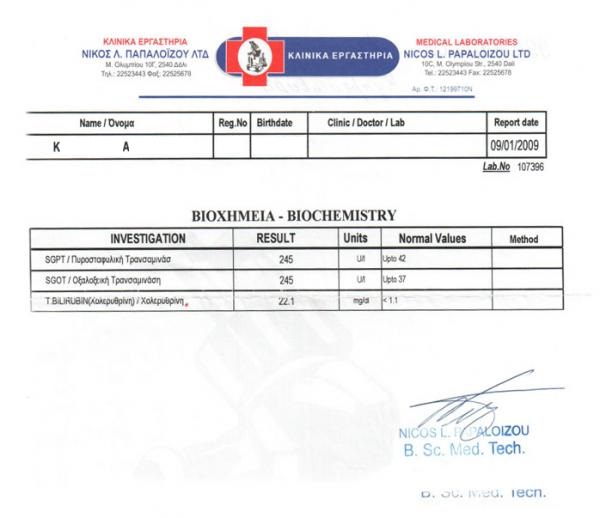
A decision was made to conduct triple therapy with high concentration doses daily. By the second day of treatment, the patient felt relief: the severe yellowing of the skin began to lighten, and the pain in the right hypochondrium decreased. Subsequent tests showed significant liver function improvement:
Analysis 2: January 14, 2009 – Bilirubin 9.3
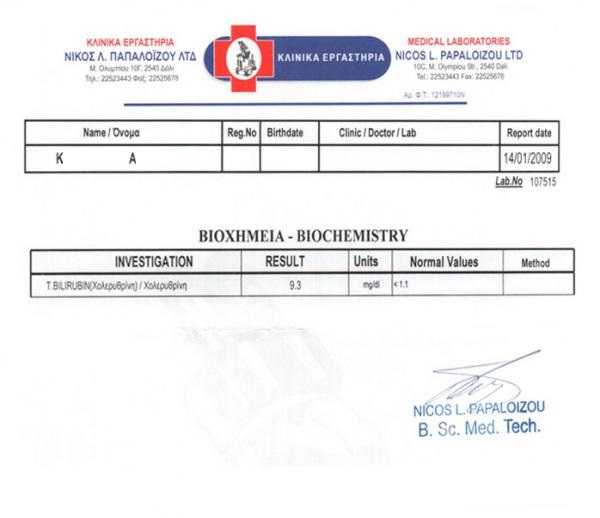
Following a re-evaluation, the therapy frequency was reduced to once daily. By the end of the second week, the jaundice and weakness had significantly decreased. Further tests indicated the patient’s stable recovery:
Analysis 3: January 23, 2009 – Bilirubin 4.08
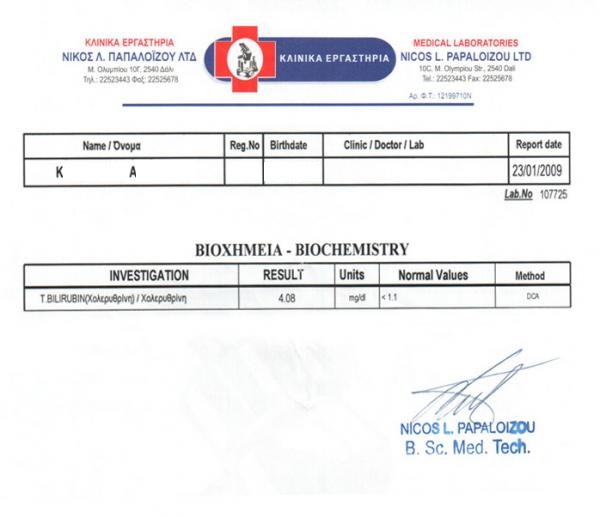
Another week of treatment saw the patient smiling, regaining appetite, and normalizing skin and sclera color. The ozone dose was reduced, and therapy continued. By the end of the week, further tests confirmed the patient’s excellent progress: stable pulse (74), improved diet, no bloating, and the ability to walk up to a kilometer daily without fatigue. The therapy continued for another week to normalize bilirubin levels, effectively saving the patient and restoring a full quality of life.
Analysis 4: February 13, 2009 – Bilirubin 0.95 (normal range)
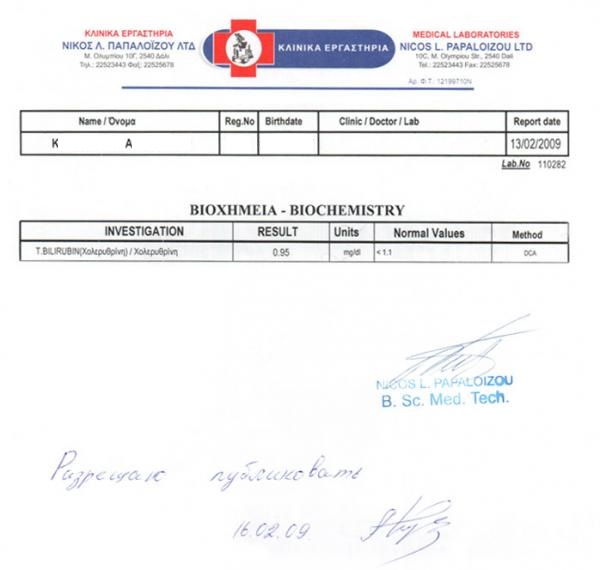
Post-Treatment and Results
Complete pain relief within 10 days of treatment.
Normalized skin and sclera color by the 20th day of treatment.
None of the known treatment methods for such terminal conditions can address this fatal problem as quickly and effectively.
Toxic Liver Damage from Heroin Injection
Overview
Patient S.Z. came to our institute with complaints of acute pain in the right side of the abdomen, severe weakness, jaundice of the skin and sclera, and dark brown (tea-colored) urine. The patient was a chronic heroin addict and was diagnosed with toxic hepatitis.
Treatment
The patient underwent 20 high-density ozone sessions intravenously (in 500 ml saline). Biochemical tests were conducted every 5 days, showing almost unchanged results initially, but the patient felt better. Full recovery was achieved in 20 days.
Results
Analysis 1: January 26, 2010 – before treatment
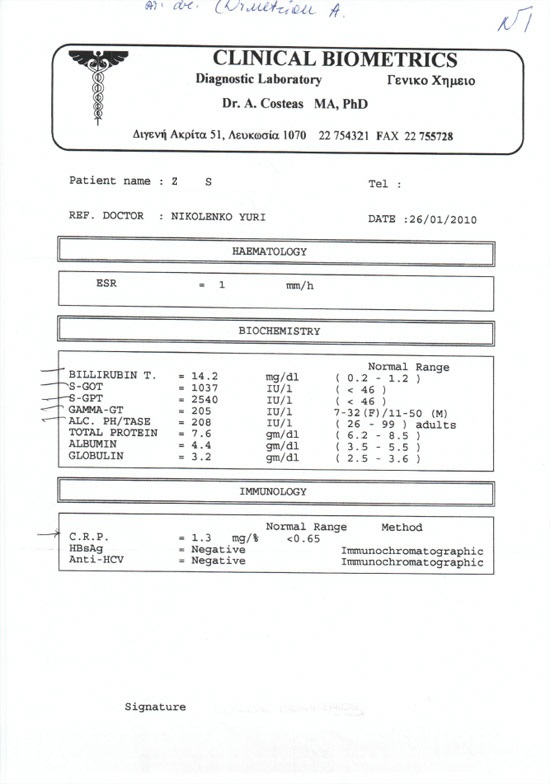
Analysis 2: 01/02/2010 – Session 5
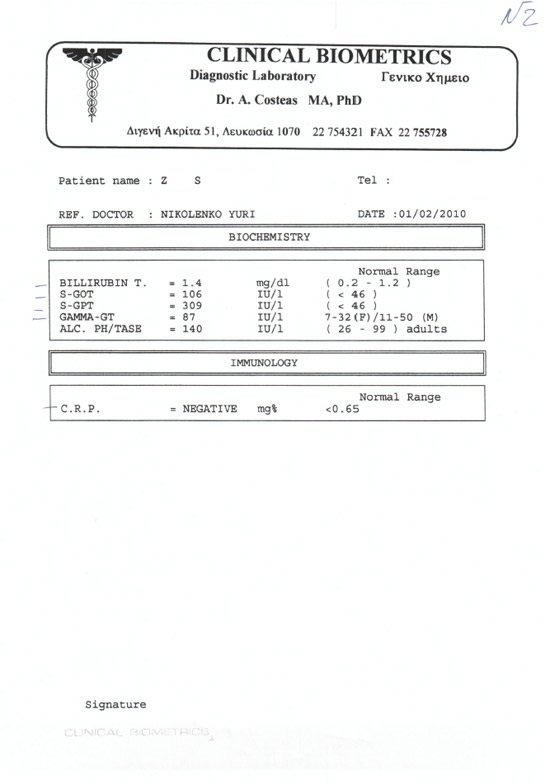
Analysis 3: 11/02/2010 – Session 10
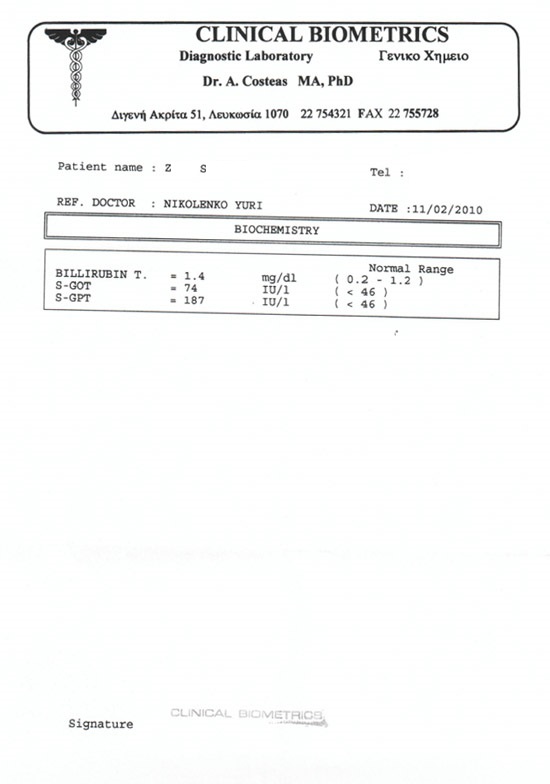
Analysis 4: 22/02/2010 – Session 15
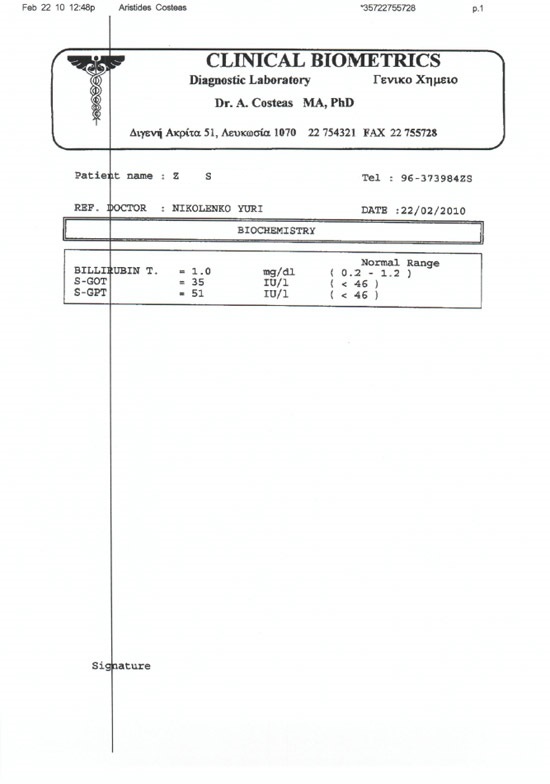
As of today, the patient has no complaints and was advised to repeat biochemical tests and report back.
Conclusion: No known treatment method worldwide could have helped this patient as effectively as intravenous ozone therapy.
Alcoholic Liver Cirrhosis and Ascites
Overview
Patient V.P., a 54-year-old man, was admitted to our institute with a diagnosis of alcoholic hepatitis. He also complained of fever and weight loss.
Treatment
The patient underwent 10 high-density ozone sessions intravenously. Regular biochemical tests showed immediate results, and he started feeling better. Within one week, results returned to normal, and his condition significantly improved.
Result (Bilirubin Analysis)
Analysis 1: April 18, 2007 – Bilirubin 7.4
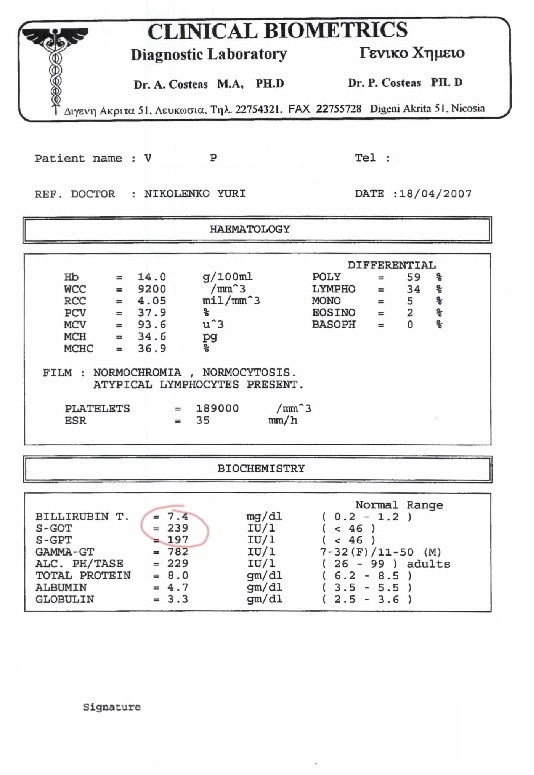
Analysis 2: April 25, 2007 – Bilirubin 1.2 (normal range 0.2 – 1.2)
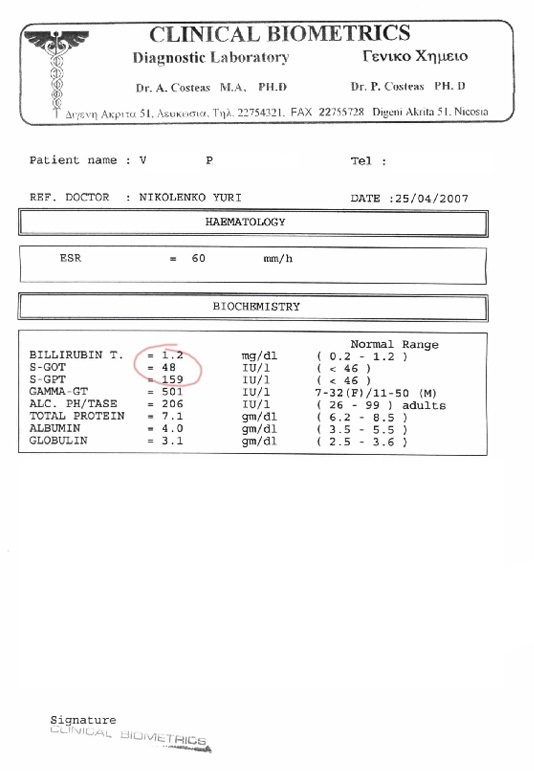
Conclusion: No known treatment methods could achieve such rapid results as intravenous ozone therapy.
Severe Chemical Liver Damage from Heavy Metal Poisoning
On April 23, 2012, two patients, aged 34 and 36, both shipyard painters, were admitted to our clinic. They complained of right hypochondrium pain, severe weakness, frequent vomiting, diarrhea, and abdominal bloating.
On examination, the liver borders were enlarged by 6–8 cm, with pain on palpation in the right hypochondrium. This was typical heavy metal poisoning from ship paint (they neglected protective measures). In Greece, they were advised to undergo a liver transplant.
Treatment
Immediate treatment involved three high doses of ozone daily for ten days, combined with urgent measures (gastric lavage, blood pressure, pulse, blood oxygen stabilization, etc.). The aim was to rapidly dissolve and eliminate the toxic substances from the body.
Oxygen levels in the blood were maintained at a maximum to ensure slower oxidation of residual toxins in the tissues. Additionally, oxygen promoted cell proliferation at the affected sites.
In our institute, we have handled many cases of domestic poisoning and presumed other origins. Many patients lacked acute symptoms (vomiting, abdominal pain, loss of consciousness, skin discoloration, etc.), experiencing only mild liver pain, depression, memory loss, and nervous system disorders. Treating such patients is long-term, requiring toxin removal and tissue proliferation, which can take months to years.
Results
After ten days, liver function indicators were near normal. Ultrasound showed liver boundaries approaching normal.
Treatment continued with daily ozone, plus rectal ozone and hydrocolon therapy.
Within three days, the patients returned home without the need for a liver transplant.
Conclusion: Only intravenous ozone in saline can ensure high doses for attacking toxic compounds.
